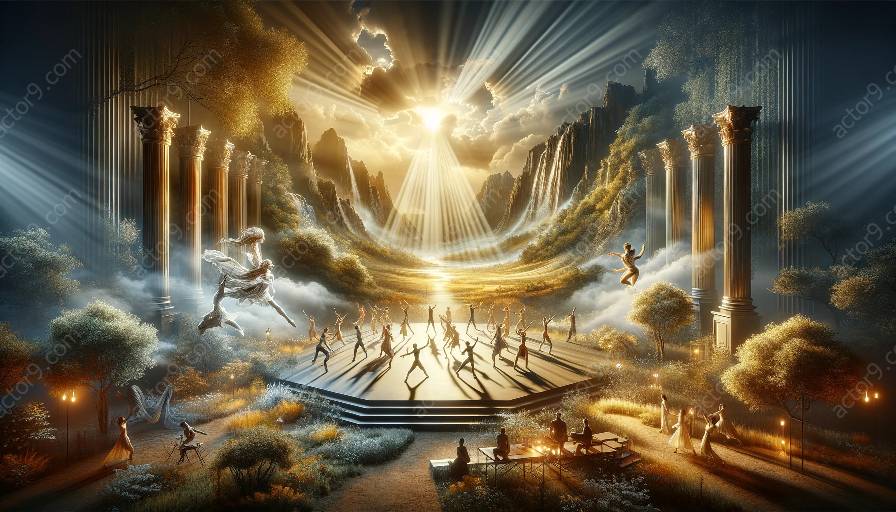Physical theatre is a dynamic art form that combines movement, dance, and storytelling to convey emotions and narratives. The integration of lighting with movement and choreography in physical theatre is essential to create immersive and impactful performances.
Lighting plays a crucial role in physical theatre by enhancing the visual elements, setting the mood, and guiding the audience's attention. This topic cluster will explore how lighting design influences physical theatre and complements the expressive movement and choreography.
The Role of Lighting in Physical Theatre
In physical theatre, lighting serves as a powerful tool to evoke emotions, establish atmospheres, and amplify the performers' movements. It shapes the stage, highlights focal points, and creates a sense of depth and dimension within the performance space. Through carefully crafted lighting designs, physical theatre productions can transport the audience into different worlds and evoke visceral reactions.
Integrating Lighting with Movement and Choreography
Integrating lighting with movement and choreography involves a collaborative process that harmonizes visual elements with performers' actions. The dynamic interplay between light and movement can convey narratives, evoke dramatic tension, and accentuate the physicality of the performers. Choreographers and lighting designers work in tandem to create synchronized sequences that enhance the storytelling and emotional impact of the performance.
Enhancing Narratives and Emotions
Through strategic use of lighting, physical theatre productions can accentuate the storyline, evoke specific moods, and convey the characters' inner turmoil. The interweaving of lighting with movement and choreography allows for seamless transitions between scenes, amplifies the dynamics of physical interactions, and accentuates the performers' expressions. This integrated approach enriches the audience's experience and deepens their engagement with the performance.
Creative Expression and Immersive Experiences
Lighting design in physical theatre offers boundless opportunities for creative expression and experimentation. By manipulating light intensity, color, and shadow, designers can sculpt the performance space, transform environments, and create visually stunning tableaus. The integration of innovative lighting techniques with expressive movement and choreography results in immersive experiences that captivate and enthrall audiences.
Technical and Artistic Collaboration
Successful integration of lighting with movement and choreography requires a blend of technical expertise and artistic vision. Lighting designers collaborate with choreographers, directors, and performers to translate conceptual ideas into tangible visual and kinetic expressions. The synergy between the technical and artistic aspects elevates physical theatre productions, making them multi-sensory and evocative.




































